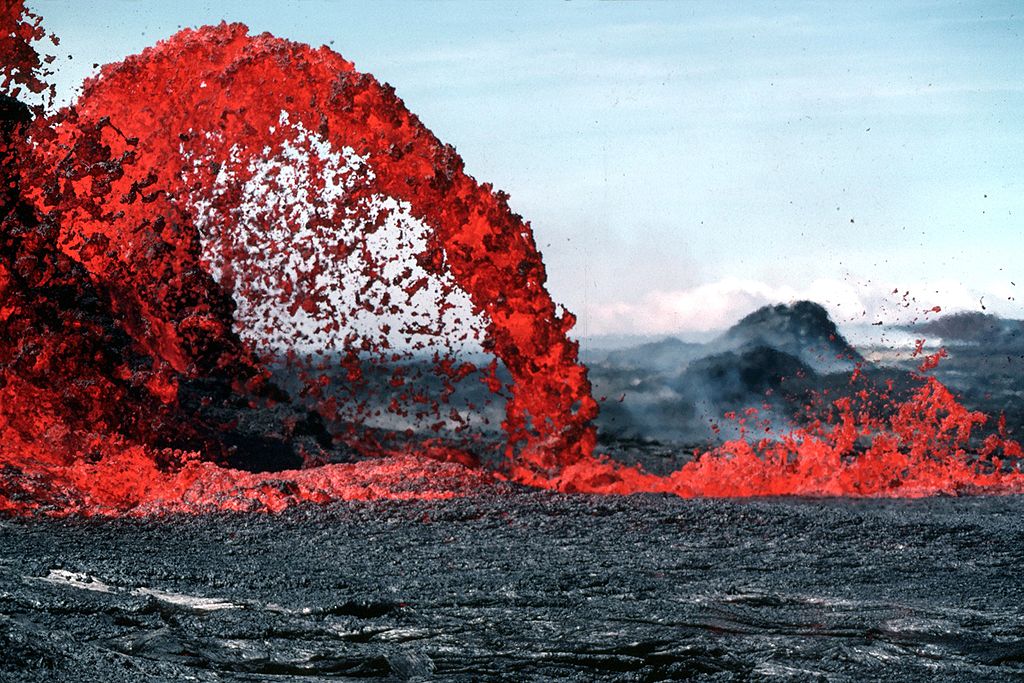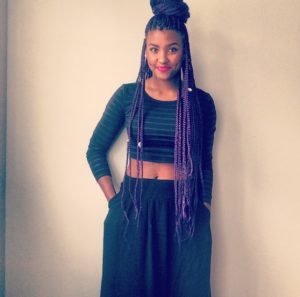The theme for this month’s practice series is BURNING THROUGH, and we’re drawing inspiration from deep earth.
The creative flow of the earth is literally embodied by lava. This fiery red flow helped mold all the natural shapes and structures on our planet’s surface—and they’re absolutely perfect and delightful. There is no natural spot on this earth that could be called “ugly.” Every location has its own wild and unique appeal.
So if the earth is always able to express herself perfectly, why do we—born of the earth—consistently find ourselves dissatisfied and critical of our own creative output? How do we burn through our perfectionism and trust that what flows from deep within us is wonderful and perfect as it is?
That’s our practice for this week: to burn through perfectionism and release our natural flow. You can do it at any point in the creative process, though it’s most effective when you notice yourself procrastinating/stuck or feeling dissatisfied.
Before you begin, if you feel paralyzed and afraid, you may want to do the Week 1 practice for releasing fear first.
Practice:
- Bring your attention to yourself and the present—where you are and also how you are.
- Connect with your body and breath. This is where you access your own natural flow. Let your breath softly expand and move throughout your body.
- If you need to, gently stretch and connect with the muscles, bones, and organs of your body. If you’ve been driving yourself to perform, your muscles might be wound up and on the defensive. Be kind to them.
- The key is to start feeling pleasure and warmth in your body. If thoughts of failure or criticism arise, turn your attention back to creating a loving and gentle space in your physical body.
- Now, place your hands on your lower belly—which is our instinctive/creative core—and feel the heat and fire circulating there. You can remind yourself, “I am enough. I am enough. Within me is the creative power of the earth.” Keep sending your love and attention here until you feel your lower belly soften and release.
- Only after you feel the release, ask your lower belly what the next step is for your creative work. It might tell you that you’re done, or it might lead you in a totally different direction. The answer might not be verbal, so the tricky part is to not let your head-mind hijack or interrupt this process with its opinion. You specifically need to ask your lower belly—and ONLY your lower belly—what it needs or wants to happen next.
- Follow that guidance as you continue to work, and keep checking in with your lower belly. Stay present and in communication with your body and its natural, instinctive flow. It has its own internal logic, so as best as possible, let it keep moving you forward.
- If your lower belly starts to radiate pleasure and feels spacious (a sense of deep delight), your natural instinct is happy and you’re on the right track. Keep moving in a direction that builds on the trickles of delight until your lower belly feels full and happy, like after a good meal. That’s a sign you’re finished for now. Any changes you make past this are most likely perfectionism—originating in the mind—and won’t make your creative work any better.
If, for whatever reason, you can’t find the place of delight and feel increasingly tired, scared, or spacey, you are probably creating from your head rather than your natural flow, which is why your body is unhappy with it. You can always course-correct by taking a step back in your creative process until your lower belly engages pleasurably again. For example, if you’re editing, go back to writing; if you’re writing, go back to your intention for the piece, etc. (You might also need to do something else altogether for a bit in order to engage your lower belly, and then return again.) Whenever your lower belly starts to feel alive again, you can continue in a new—and more internally fulfilling—direction from there.
What does a real-life example of this look like? So, for example, you might be in the middle of writing an article on procrastination for a really awesome magazine. Halfway through, you notice that none of your sentences make sense and it all just sounds awkward. You feel increasingly distracted and frustrated and keep erasing sentences and retyping them.
Through a lucky moment of self-awareness, you realize you’re drowning in perfectionism. So you pause and notice that you can barely feel your body. You breathe love and warmth back in and remind yourself that you are enough. The lower belly engages and quietly whispers, “Not procrastination. Write about perfectionism.” Suddenly, there’s a flicker of light in the abdomen and a spiral of pleasure floats up the spine. Your eyes brighten, and as your fingers quietly scroll back to the beginning, this time, the words flow …
Photo by Jim D. Griggs, HVO (USGS) via Wikimedia Commons





